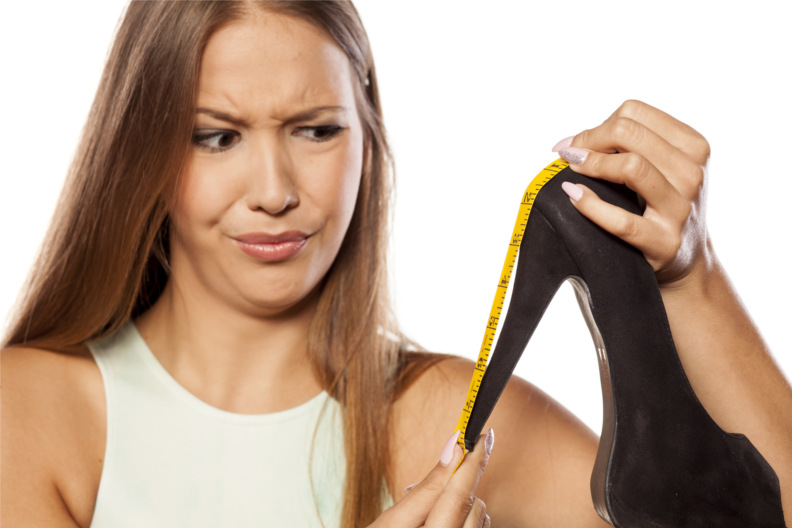Measuring the height of high heels is a quick and easy task, and can be a useful way of comparing your current pumps with a pair of new shoes that you may be eyeing up from the internet.
In this post I have set out a few tips to help you measure heel heights accurately as possible. My post also talks about whether there is a “proper” way to measure heels.
How to measure high heels
That first thing to understand about measuring the height of heels is that different manufacturers and retailers actually measure these heights in different ways. This can be a little frustrating at first as means that the same pair of high heels can be listed on different sites with different heel heights.
I have seen variances of up to 0.5″ and, believe me, it can make a difference at the end of the day!
Although some methods are more common than others, there is no “official” way of measuring heel heights. So the first thing that I would advise you to do is to look to the retailer’s help pages to see how *they* do it.

One of the most common methods is used by major retailers such as Zappos and Amazon. This involves measuring straight up the centre side of the heel as shown in Zappos’ diagram above.
It is important to remember that the measurement should be the shortest distance from the top of the centre of the heel to the ground. This means that if you are using a tape measure, this should not follow the inward curve of the heel.
Your tape measure or ruler also shouldn’t measure to the base of the stiletto itself. It should simply drop directly down in a straight line to the floor.
A variation on this method is to measure straight up the centre back of the heel to the join where the inner sole begins. This will yield a slightly greater height because the back of the heel is the highest part of the shoe.
There are a few quirky variations on these methods, but they are unusual. For example, I have seen designers who don’t count the heel cap at the very bottom of the heel when measuring the height.
This sort of variation is rare. However, because it happens from time to time, it can be worth checking how your retailer measures their heels.
Heel heights vary depending on shoe size
To maintain the proper proportions of a shoe design, heel heights can vary slightly with shoe size. This means that heels can be higher for bigger sizes and shorter for smaller sizes.
The difference is usually not very much but it is something to be aware of. Most large retailers will tell you not just the heel height of a pump but also the size it is measured on.
Once upon a time, most retailers used to use either a size 7 or 8 shoe to provide their measurements but this can no longer be said to be the case. I have seen sizes from 6 to 10 used quite regularly to give heel heights so please read the fine print when you are ordering!
Rounding up and down
One final thing to note is that many retailers will round their heel heights up or down. This can be a little disconcerting as I have seen heels which a designer lists officially as 3.9″ retailed as 3.5″!
The differences are not usually as dramatic as that but they can happen. For that reason it is a good idea to check a retailer’s rounding policy before buying. Sometimes it can be a good idea to look at multiple sites to compare the height they advertise for the same pair of shoes.
Further information
I hope this helps answer your questions about measuring the height of high heels. If there is something which you would like to add to my guide, I would love to hear from you via my contact page.

